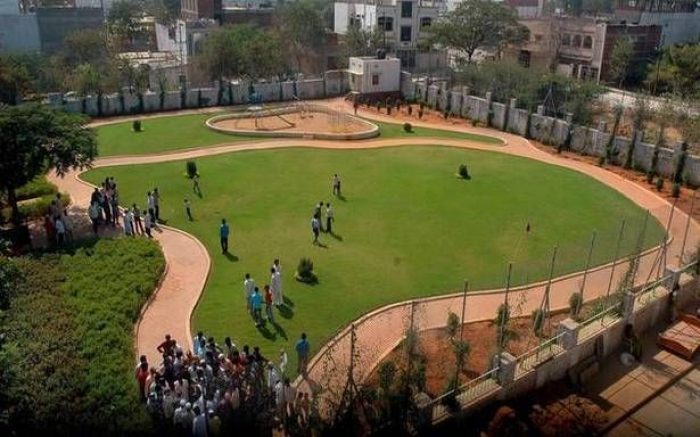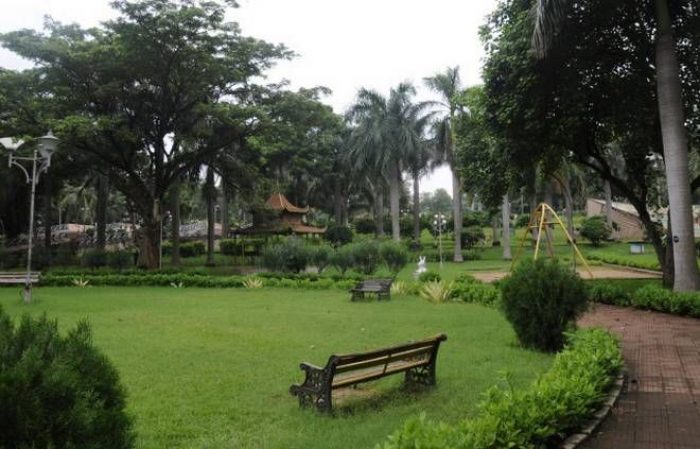Urban green spaces create great cities where the built and the the natural environments are interwoven. However, sometimes creating green spaces are considered as a challenge, particularly in developing countries, where there is pressure for space, resources and development.
Concept of Urban Green Spaces
The world’s cities are becoming increasingly congested and polluted. Urban green spaces provide a wide range of ecosystem services that could help combat many urban ills and improve life for city dwellers.
The definition of urban green spaces which is agreed on by ecologists, economists, social scientists and planners: “they are public and private open spaces in urban areas, primarily covered by vegetation which is directly or indirectly available for users (Haq, 2011). In another way, it is the land that consists predominantly of unsealed, permeable, “soft” surfaces such as soil, grass, shrubs and trees. It is the umbrella term for all such areas whether or not they are publicly accessible or publicly managed. It includes all areas of parks, play areas and other green spaces specifically intended for recreational use, as well as other green spaces with other origins (Dunnett, Swanwick and Woolley, 2002).
Characteristics of Urban Green Spaces
Such green spaces vary in size, vegetation cover, species richness, environmental quality, proximity to public transport, facilities and services. Public green spaces include parks and reserves, sporting fields, riparian areas like stream and river banks, greenways and trails, community gardens, street trees and nature conservation areas (Wolch, Byrne and Newell, 2014).
Public green spaces should be at the center of neighborhood and not more than five minutes walk for most residents, public buildings or shops. Therefore, accessibility and proximity are very important factors to consider during planning and design of an urban green space (Haq, 2011).
What do Good Urban Green Spaces Offer?
Urban green spaces can give enormous benefits to the neighborhood and community by improving health, social well-being and enhancing enjoyment of local environment. The important role of urban green spaces is recognized both in the character and the life they bring to towns and cities around the world (Malek, Mariapan and Shariff, Unknown).
1. Environmental Benefits
– Ecological benefits: urban green spaces supply cities with ecosystem services ranging from maintenance of biodiversity to the regulation of urban climate.
– Pollution control: green space may filter air, remove pollution and attenuate noise.
– Biodiversity and nature conservation: green spaces do functions as protection center for reproduction of species and conservation of plants, soil and water quality. Urban green spaces provide visual relief, seasonal change and link with the natural world.
2. Economic and Aesthetic Benefits
– Energy savings: using vegetation to reduce the energy costs of cooling buildings has been increasingly recognized as a cost-effective reason for increasing green space and tree planting. Plants improve air circulation and provide shade. This provides a cooling effect and help to lower air temperature.
– Property value: areas of the city with enough greenery are aesthetically pleasing and attractive to residents, visitors and investors. Urban green spaces can be one of the factors that attract significant foreign investments that assist in rapid economic growth (Haq, 2011).
3. Social and Psychological Benefits
– Recreation and wellbeing: green spaces are key element for recreation and to experience nature. They enhance the quality of life for people living in the surrounding area and provide locations for a variety of leisure activities as a multi-use recreational open space. Green spaces are concerned with social values and how places encourage people to interact in ways which lead to trust, mutual understanding, shared values and supportive behavior. Social values arise when people can connect to others with common interests.
– Human health: help in improving the health of the public, as it is discovered that time spent in nature, relieves mental fatigue and the feelings of violence and aggression that can spring from it. Natural resources provide many “activities” that require little to no effort, yet provide ways to restore a person’s health and mental wellbeing. This kind of green spaces can help to relax and unwind and create social development in children. Also, physical health and wellbeing can be maintained through participating in organized sports, excising informally, contact with nature and being outside in the fresh air and sunlight. Recent scientific studies have demonstrated that natural areas have positive health impacts on development issues, particularly behavioral disorders like attention deficit hyperactivity disorder (ADHD). Health studies have also shown that contact with nature offers a range of medical benefits such as lower blood pressure and cholesterol levels, enhance survival after a heart attack, a more rapid recovery after surgery and lower levels of stress and depression.
The Effect of Urban Green Spaces on Sustainability
Urban green spaces are considered as important contributor and can be a significant part of sustainable development. Developments of urban green spaces need to consider interdisciplinary and integrative approaches such as economic, social, cultural, management and planning aspects to improve existing urban spaces’ facilities and services and to optimize urban green space policies. The quality of cities depends on how the urban green spaces are designed, managed and protected. The social aspects of urban green spaces include diversity of land uses, contribution to health and active life styles in cities, social justice by incorporating all groups and ages of people into green spaces, opportunities to interact and expand social network, enhancement of cultural life for different communities living in the city by providing a platform to share views, feelings and to celebrate different groups occasions and, a venue for environmental education for the schoolchildren and a play ground for children for the social, mental and physical development.
From the planning aspects, urban green spaces include business, retail, leisure development, tourism development; employment centers besides residential areas and the good planning of urban green spaces can play a role as a visual screen, a function of noise protection and a place for commuting and recreation by providing well-designed networks within the park and with the other areas.
The economic aspects of urban green spaces incorporate- as a place for production and supply of fruits, wood to green business centers, and as a place for new jobs creation and increasing economic value of the area by integrating the environment friendly behavior and attracting tourists provided with convenient atmosphere, security and facilities for the tourists. Most importantly the ecological perspective considers urban green spaces as a facilitator to reduce the impact of human activities through absorbing pollutants and re-leasing oxygen, contributing to the maintenance of a healthy urban environment with clean air, water and soil and preserving the local natural and cultural heritage with a diversity of urban wildlife and urban resources.
Conclusion
Urban green spaces fulfill many functions in urban context that benefits people’s quality of life. Steadily growing traffic and urban heat, especially in the developing countries is not only damaging the environment but also incur social and economic costs. The ecological benefits bestowed in green spaces which range from protecting and maintaining the biodiversity to helping in the mitigation of change cannot be overlooked in today’s sustainable planning. Green spaces also help in reduction of the energy costs of cooling buildings effectively. Furthermore, due to their amenity and aesthetic, green spaces increase property value. However, the most sought benefits of green spaces in a city are the social and psychological benefits. Urban green spaces, especially public parks and gardens provide resources for relaxation and recreation. Green spaces need to be uniformly distributed throughout the city area, and the total area occupied by green spaces in the city should be large enough to accommodate the city population needs. Cities are responsible for most of the consumption of the world’s resources and are home to most of the world’s citizens as well. Bringing green space to the urban landscape can promote and inspire a better relationship with the environment while supporting important services. Green space is part of and also represents habitats and ecosystems. The promotion and conservation of green space in cities is in the hands of local and regional authorities.
References
– Dunnett, Nigel, Swanwick, Carys and Woolley, Helen. (May 2002). “Improving Urban Parks, Play Areas and Green Spaces”. Department of Landscape. University of Sheifield. London
– Haq, Shah. (May 2011). “Urban Green Spaces and an Integrative Approach to Sustainable Environment” .Journal of Enviroemental Protection. Vol. 2. pp.601-608
– Malek, Nurhayati, Mariapan, Manohar and Shariff, Mustafa. (Unknown). “Accessing the Quality of Green Open Spaces: A review”. http://www.hphpcentral.com
– Wolch, Jenneifer, Byrne, Jason and Newell, Joshua. (2014). “Urban green space, public health, and environmental justice: The challenge of making cities ‘just green enough”. Landscape and Urban planning. Vol. 125. pp 234-244



